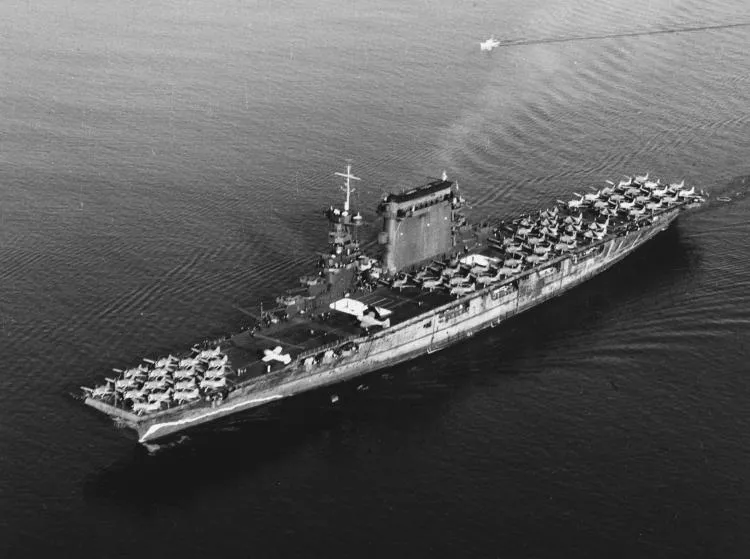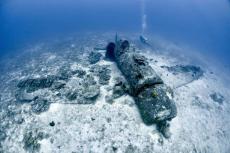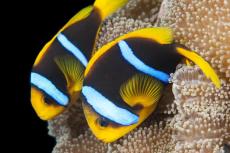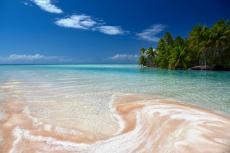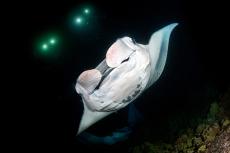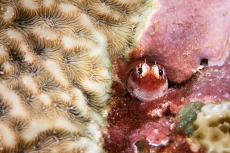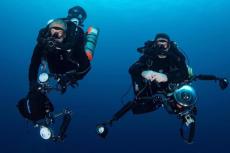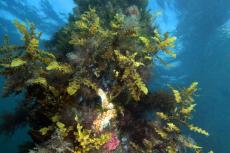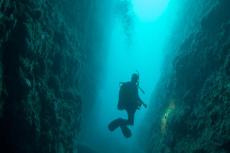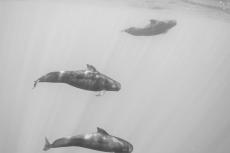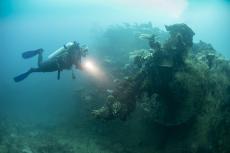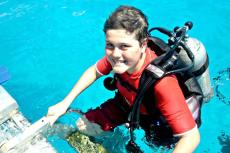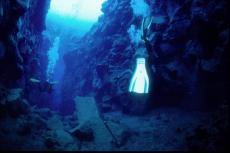WW2 aircraft carrier USS Lexington wreck located
Wreckage from the USS Lexington has been found in Coral Sea by a search team led by the billionaire co-founder of Microsoft, Paul Allen. Aircraft from the ship appear remarkably well preserved with squadron insignia and visible kill markings.
The USS Lexington was scuttled about 800 kilometres (500 miles) miles off the eastern coast of Australia in May 1942 after sustaining serious damage from Japanese aircraft. A series of secondary explosions after the Japanese attack sealed the ship's fate and one of her own escorting destroyers was ordered to finish off the crippled carrier.
The wreck of the "Lady Lex", as she was known, was discovered by the crew of Allen's research vessel, RV Petrel, on 4 March at a depth of 3,000m and was positively identified when her nameplate was found on the remains of the ship's stern. The team shared photos of the carrier taken by the RV Petrel, which also showed aircraft that appeared remarkably well preserved.
The USS Lexington was originally commissioned as a battlecruiser but was launched as an aircraft carrier in 1925. She took part in the Battle of the Coral Sea (May 4-8, 1942) along with the USS Yorktown against three Japanese carriers. This was the first carrier-versus-carrier battle in history and was the first time Japanese forces suffered a permanent setback in their advances on New Guinea and Australia. However, the U.S. lost the Lexington and more than 200 of its crew members.
Scuttled
The Lexington had been hit by multiple torpedoes and bombs on May 8 but it was a secondary explosion causing uncontrolled fires that finally warranted the call to abandon ship. The USS Phelps delivered the final torpedoes that sank the crippled Lady Lex, making it the first American aircraft carrier casualty in history. With other U.S. ships standing by 2,770 crewmen and officers were rescued.
The Petrel crew had been planning to hunt for the Lexington for six months after successfully locating several historic wrecks including the Japanese battleship Musashi and the U.S.S. Indianapolis last year. "Lexington was on our priority list because she was one of the capital ships that was lost during WWII," Robert Kraft, director of subsea operations, said in a statement.
Fact file
Allen-led expeditions have also resulted in the discovery of the USS Indianapolis (August 2017), USS Ward (November 2017), USS Astoria (February 2015), Japanese battleship Musashi (March 2015) and the Italian WWII destroyer Artigliere (March 2017).
His team was also responsible for the presentation to the British Navy in honour of its heroic service. Allen’s expedition team was permanently transferred to the newly acquired and retrofitted R/V Petrel in 2016 with a specific mission around research, exploration and survey of historic warships and other important artifacts.


